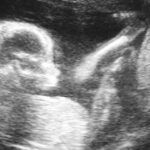By Dr. Timothy Millea
The closing verse in the Gospel of Matthew carries a powerful metaphysical message: “Behold, I am with you always, until the end of the age.” Imagine you were there on that mountain in Galilee as Jesus spoke. We don’t know if his mother, Mary was there, but the words of her son were not only metaphysically true but also literally true. The intermingling of Mary’s and Jesus’ cells was, and still is, an unbreakable bond due to a scientifically proven phenomenon known as microchimerism.

Microchimerism is defined as the presence of two or more genetically distinct cell populations in one individual. During pregnancy, a two-way transfer of cells takes place between the mother and her baby in utero. During the first few weeks after conception, cells from both mother and baby pass back and forth across the placenta. During pregnancy, up to 10 percent of the DNA in the mother’s bloodstream comes from her baby. After the baby is born, the percentage of the baby’s DNA in the mother drops, but some cells remain functional for the rest of the mother’s life. Also, as a result of this wonderful exchange of life, each child will have cells from their mother that will likewise live in them. For both mother and child, the cells from the other are actively involved in their health over their lifetime.
The cells of the child have been found in the mother’s blood and all major organs. This biologic intimacy is even more profound with the recognition that the mother will also have some of her mother’s cells, leading to at least three unique cell lines in her body. Further, if the woman has more than one pregnancy, each new baby will receive cells from the mother as well as cells from their older siblings. More recent research has shown cells that are passed through multiple generations, demonstrating true “family ties” on a microscopic level.
The science of microchimerism is growing and the implications of this cell exchange are profound. There is strong evidence that the baby’s cells that live on in the mother are protective of her health and well-being. These cells are found around healing wounds, helping with more rapid tissue repair. They stimulate the formation of new blood vessels to injured and diseased structures. Researchers at the Cincinnati Children’s Hospital found that these cells also improve the outcome of future pregnancies by improving the mother’s tolerance. In essence, the cells of the first child not only help the mother but also help protect their younger siblings. An increased presence of the child’s cells is associated with a lower risk of Alzheimer’s disease, breast cancer, thyroid disorders and many other diseases.
There is evidence that microchimerism improves immune system function, especially as the child’s cells seem to detect and attack malignant cells. Microchimeric cells may lead to longer life spans. In a study of nearly 300 elderly Danish women, the presence of these cells reduced the mortality for all causes by 60 percent, largely because of a significantly reduced risk of death from cancer. The study’s authors speculate that longer life was a result of microchimerism, due to better immune function and improved repair of damaged tissue. As another study’s author noted, “It looks like they’re actually coming to the rescue and participating in repair.”
The pertinence of microchimerism to the abortion debate is profound. Among abortion proponents, a common refrain is, “It’s MY body!” With the established science regarding microchimerism, that body is not only carrying a new life but that new life’s cells will remain in the mother’s body for the rest of her life. With abortions even during the earliest weeks of a pregnancy, the mother is flooded with her baby’s cells. Studies of such cases have shown that up to a half-million of the baby’s cells are transferred to the mother. This leads to a tragic irony. Although the mother’s transferred cells died with the aborted baby, the baby’s cells will live within the mother for the rest of her life, and will literally fight for her life. Further, with any future pregnancies, that child’s cells will perform the same protective duties for their younger siblings.
There is no more intimate connection than that between a mother and her child. Microchimerism reveals the scientific proof of this powerful relationship and lays bare the lie of abortion, which severs the biologic bonds that unite the mother and child forever.
Let us return to that mountain with Jesus and his followers and assume that Mary is in the crowd. Within her sinless body, Jesus’ cells have thrived for at least 33 years. As the “New Ark of the Covenant” she had to be without sin to have conceived the Son of God, and she was, through her immaculate conception. It also follows that since her son’s holy and eternal cells are incorruptible, Mary could not suffer a natural death. Therefore, the doctrine of Mary’s assumption to heaven, body and soul, can be firmly grounded in the study of microchimerism. This powerful and life-affirming research is yet another example of the cooperation of faith and science. However, in this matter, faith has led the way for 2,000 years, and only recently has science started to catch on … and catch up.
(Dr. Millea is a physician, president of the St. Thomas Aquinas Guild of the Quad Cities and member of St. Paul the Apostle Parish, Davenport.)











